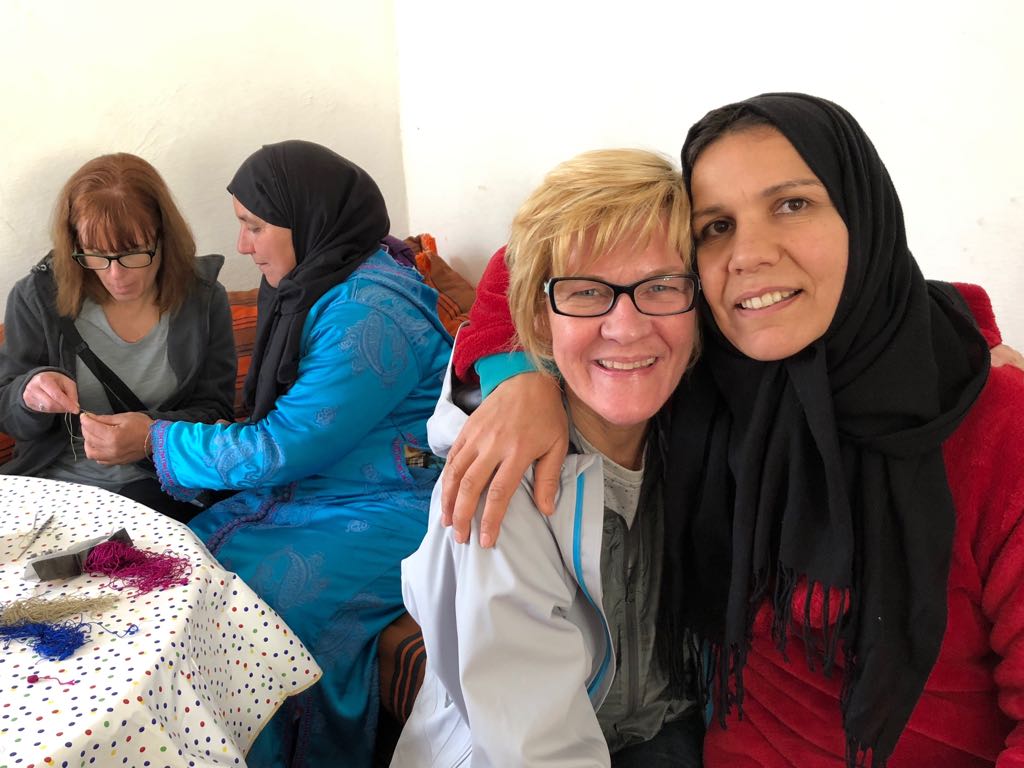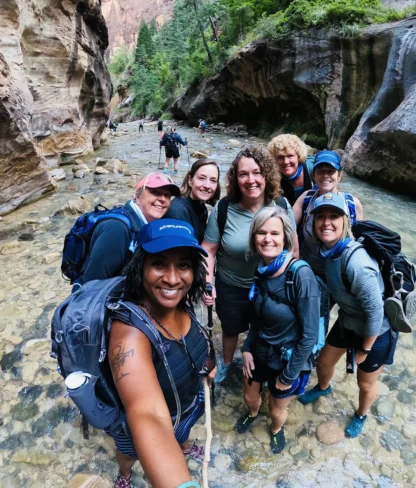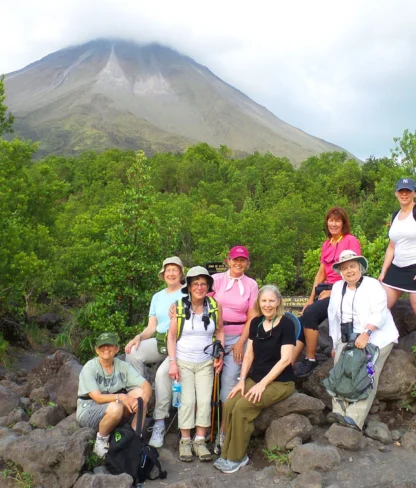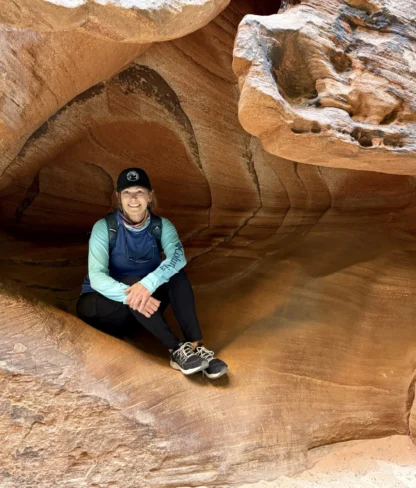Women-To-Women: Creativity, Crossing Cultures and Learning From Each Other

AdventureWomen was founded out of Susan Eckert’s passion for showing women the transformational power of travel in our lives; the ways in which our relationships with our fellow travelers evolve; how our world view changes; and how our empathy and understanding of other cultures expands and deepens.
We always want to continue this tradition on our trips at AdventureWomen. In fact, we want to push it even further so that women who join us on our trips truly receive a life-changing experience, however small or large, through the connections they form with other women they meet. The women-to-women touch points included in our itineraries are one way we hope you, as our guests, can bridge cultural boundaries and find “common cause” with women leading completely different lives literally, a world away. Here are some opportunities we hope you can take advantage of which offer fun, learning and camaraderie across cultures…
MOROCCO: Leveraging a Foothold to Gain Literacy, Confidence & New Skills
When we visit Morocco, we are treated to a very special experience, meeting the women who are part of the Coopérative Artisanale Féminine des Boutons en Soie ‘Cerises’, or Cherry Buttons Cooperative. The Cooperative grew out of the Golden Buttons Association, a joint project with the Peace Corps in Morocco.

The Cooperative began with a micro-credit loan to acquire supplies and over time, the Cooperative’s list of clients began to grow as it gained notoriety for the quality and diversity of its buttons, drawing praise from tailors and wholesalers in Rabat and Casablanca. While Moroccan law outlaws the ability of a womens’ cooperative to generate an income, these women have successfully gained control over the sale and distribution of these unique fabric buttons produced in the Sefrou region in Morocco. Culturally, the Cherry Buttons Cooperative broke new ground in a traditionally male-dominated business environment, allowing women for the first time to negotiate the price of their products, determine the value of their labor, and manage a growing enterprise.

In 2005, the Cooperative asked the Sefrou Province government to provide the funding to train a group of women interested in learning weaving. Once they had received their weaving certificates in 2007, they solicited and were awarded funding from Morocco’s Initiative Nationale pour le Dévelopment Humain to purchase several horizontal and vertical looms. The looms provided more employment opportunities for the women and allowed them to further diversify the Cooperative’s product line.
Profits from the cooperative’s efforts are channeled back into the Golden Buttons Association which has been able to provide programs to local girls and women including a young girls empowerment camp called GLOW, Girls Leading Our World, as well as training workshops in natural-dyeing techniques and product development. Most importantly, the Cooperative has allowed many Moroccan women to gain confidence, not only by learning new technical skills in weaving and button fabrication but also in gaining management and organizational skills, expanding their horizons from their traditional domestic and economic roles.

TANZANIA: Maasai Women Entrepreneurs Teach Us How To Really Get Creative
Another great example of crossing cultural boundaries and sharing women-to-women experiences is our visit to the Enjipai Women’s Group in Tanzania. This organization was formed by a group of Maasai women with a great entrepreneurial spirit. Now numbering over 100 members, the collaborative already has several successful microfinance initiatives underway. This is almost revolutionary given the traditionally patriarchal nature of the Maasai and the fact that Maasai women are highly constrained in the ways they can generate income from their families, restricted largely to raising livestock.

One of the most successful of the Enjipai’s projects has been their creative initiatives around jewelry design. “Enjipai” means happiness in the old Maasai language and the objective of the group is to help improve the living conditions of the Maasai community in Tanzania, particularly among women, by showcasing these women’s passion for art and their creative talents by making authentic and unique, hand-crafted jewelry, leatherwork and accessories. Every piece of their work is one of a kind and tells a story about the artist.

The Enjipai group has inspired other women entrepreneurs and jewelry artists in Africa such as the 24 year old founder of Afriposh Designs, Glory James. She collaborates with the Maasai who do all the beading work for her designs. In a recent interview with ZeAfrica News, she describes her passion:
Your aim is “Transforming culture into fashion”, how do you make this happen? And why is it important to you?
We are aiming to transform culture into fashion, simply by using traditional techniques from Maasai ladies and add some creativity using varieties of accessories (like African prints, shells, buttons, chains and gems) which results in a unique and diversified beaded jewelry, with artistic appeal. We realized that people really do love fashion, but relying only on traditional jewelry without adding any value to it to create something new won’t take us far in the fashion industry. We also aim to take African jewelry to the world stage.
Transforming culture into fashion will help us to get more customers from different parts of the world, as it’s something which can be worn by anyone regardless of the country or continent it was made in. We aim to clear the minds of people, who usually think that traditional African jewelry is purposely for traditional ceremonies or for local people and aspire to get and see world wear traditional African jewelry confidently and with their daily outfits.
Who inspires your creations?
Nasreen Karim from Enjipai jewelry inspired me a lot, as she always makes very unique and appealing creations.

ITALY: Dance As An Artform, Heritage and Community Bond
On our biking adventure in Puglia, we learn to how to dance the pizzica (also known as the tarantella), a traditional dance that originated in Apulia. This local dance, native to Southern Italy, can be danced by men and women or by women together and typically features a scarf which the dancers employ to communicate to each other during the dance. The instruments of the musicians who provide the orchestra for the dancers are an important part of the heritage of this social tradition in the rural areas in Southern Italy. Take a look!
We hope to continue to add more transformative experiences for our guests at AdventureWomen to our itineraries. If you have ideas for these, we would love to hear them!


